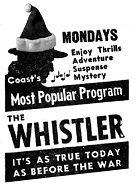
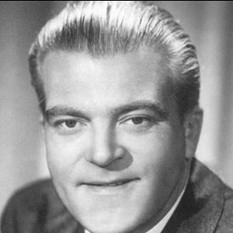 “I am the Whistler, and I know many things, for I walk by night. I know many strange tales, hidden in the hearts of men and women who have stepped into the shadows. Yes… I know the nameless terrors of which they dare not speak.”
“I am the Whistler, and I know many things, for I walk by night. I know many strange tales, hidden in the hearts of men and women who have stepped into the shadows. Yes… I know the nameless terrors of which they dare not speak.”
The Whistler (1942-55) aired “Twelve Portraits of Marcia” on January 21, 1948 as the 295th of its 760+ (depending on how one counts) episodes. It is only the third episode of the show we have run, the past two coming in June and September of this year. For newcomers, introductory background material on the show is reprised below (it was the most popular west coast radio show for many years), with the background providing context for its not unique but unusual narrative format.
There were two attempts for The Whistler to break into the east coast market that didn’t last long (July-September 1946, and March 1947-September 1948) due to mediocre ratings, so if these episodes are counted as part of the overall scheme of things, the total number of shows ends up somewhere around 769. Over its thirteen-year west coast run it never took a summer break and ran continuously, certainly some kind of record, and its sole west coast sponsor, Signal Gas & Oil remained loyal throughout. While the show had several narrators over the years, the one who held the longest tenure and is most associated with the show was Bill Forman (photo top right).
The Whistler has an interesting backstory, and would take much too long to go into here to give it the justice it warrants. A few points of interest will suffice for this offering of the beloved mystery show, the first of which is the use of the narrator as more than just a host. From Jim Ramsburg’s Gold Time Radio entry on The Whistler: “Like The Shadow’s first personification a dozen years earlier, Inner Sanctum’s ghostly Raymond in 1941 and The Mysterious Traveler in 1943, The Whistler stood outside the stories he narrated. Unlike the others, he used a unique second-person, present tense technique as if to talk directly with the central character of his stories – often an innocent drawn into the plot by circumstances or an amateur driven to murder as a last resort.” A second point of interest has to do with the trademark whistling that opens each episode. From Radio Spirits‘ Blog Archive on The Whistler: “The program featured one of radio’s classic openings: a haunting 13-note theme created by Wilbur Hatch (who also composed the show’s eerie mood music). Hatch estimated that only one person in twenty could whistle this exact melody, and for the show’s thirteen-year duration one person pretty much did—a young woman named Dorothy Roberts. In fact, during the war years, Roberts had to get permission from Lockheed (where she worked) to leave her factory job in order to make it to the program and whistle every week.”
The radio show proved popular enough that Columbia Pictures made eight Whistler films from 1944-48, all but one starring Richard Dix: The Whistler (1944), The Mark of the Whistler (1944), The Power of the Whistler (1945), The Voice of the Whistler (1945), Mysterious Intruder (1946), The Secret of the Whistler (1946), The Thirteenth Hour (1947) and The Return of the Whistler (1948). The show was brought to early television in 1954-55, but never caught on. Nevertheless (and due in great measure to roughly 500 of the estimated 700+ original shows still surviving–and the movies still showing up on classic movie tv channels), The Whistler probably enjoys a larger audience today than it did in its heyday during the Golden Age of Radio.
This episode reveals its secrets in an unusual (non-linear and therefore interesting) fashion, in that the motive of the murderer and the one who provides his initial alibi aren’t revealed until the end, and involve the evolution of an artist’s work as ferreted out by an astute art dealer as he examines the titular “Twelve Portraits of Marcia.”
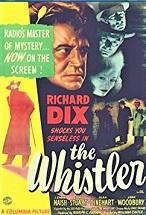
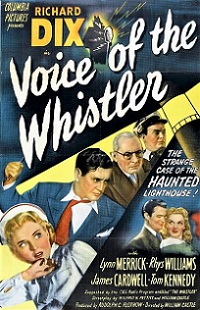
Play Time: 29:20
{After listening to this episode of The Whistler and seeing a criminal brought to justice, and having spent most of their Christmas bounty stocking up on all of their favorite SF pulps, the neighborhood gumshoe wannabes turned to detective magazines for their fix of danger and adventure. Crack Detective (1938-57), though enjoying a long run, went through no less than eight title changes yet survived them all. Though it would see only 5 issues in 1948 it was a bi-monthly. Dime Detective (1931-53) was a reliable monthly for all but the last 3 of its 22-year run, and in 1948 was a monthly. Thrilling Detective (also 1931-53) was just as reliable a source for detective thrills and mayhem as was Dime Detective, and was also a monthly for most of it existence, finally going to bi-monthly in 1946.}
[Left: Crack Detective, Feb. 1948 – Center: Dime Detective, Jan. 1948 – Right: Thrilling Detective, Feb. 1948]
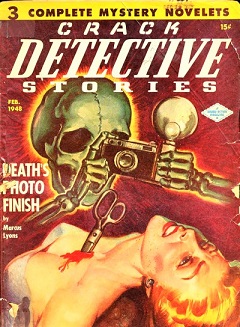
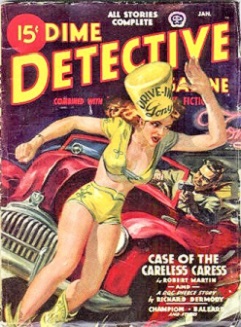
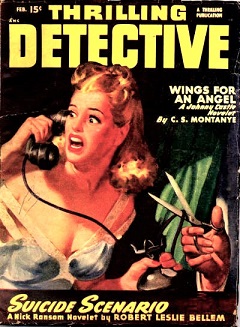
To view the entire list of weekly Old Time Radio episodes at Tangent Online, click here.